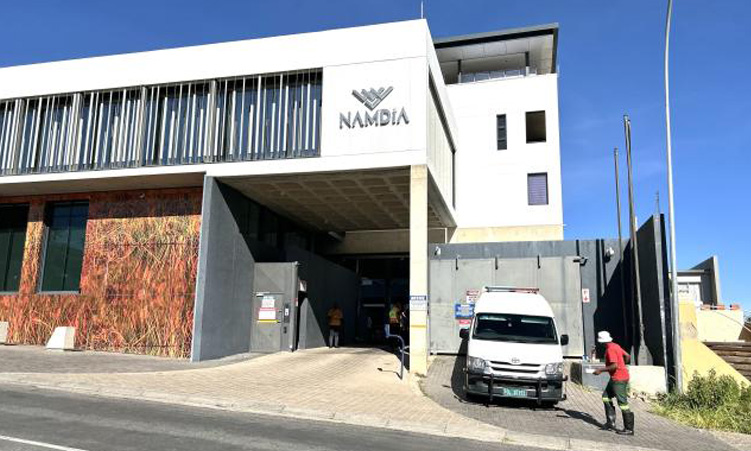LONDON – Oil prices pushed higher yesterday, supported by low inventories in the United States ahead of the peak summer driving season with analysts predicting an across-the-board draw in US fuel stocks last week.
London’s benchmark Brent crude for April stood 20 cents higher at US$32,97 a barrel after sliding nearly 60 cents on Monday as speculators took profits from rapid recent gains. US light crude rose 16 cents to US$36,78 a barrel after touching a high of US$37,51 on Monday, a level not seen since just before the US invasion of Iraq.Prices have jumped around US$4 since Opec agreed to cut supply quotas by one million barrels per day (bpd), or four percent, from April and to eliminate production over existing limits.Fears of a US gasoline supply crunch as new environmental regulations kick in have been sharpened by political unrest in Venezuela, a big regional supplier of crude and gasoline.All eyes are on the US government inventory data due today.A Reuters poll forecast a 600 000-barrel drop in gasoline stocks, a 550 000-barrel draw in crude and a 1,25 million barrel fall in distillates.”A bearish report on gasoline could bring everything down,” said Jim Ritterbusch of Ritterbusch and Associates.Oil analysts have hoisted 2004 crude price forecasts by 10 per cent since January, reinforcing a growing consensus that higher energy prices are not going away any time soon.A Reuters survey of 18 analysts forecast the 2004 average price of benchmark Brent crude oil at US$27,13, up by 10 per cent from a January forecast of US$24,70 as low US inventories, insatiable Chinese demand and Middle East political instability spark heavy buying from speculative hedge funds.”What appeared initially to be the temporary result of Opec’s hyper-restrictive supply policy now seems to be a permanent condition,” said Frederic Lasserre of Societe Generale in a research note.”The oil industry has learned to function with just-in-time stocks at the price of extremely high freight rates and increased volatility.”Qatar’s oil minister said yesterday that Opec oil producers would implement a plan to cut supply quotas from April despite the sustained price strength.Members such as the UAE, Nigeria and Iran have scheduled lower sales for April in line with the forthcoming reduction in quotas.Saudi Arabian officials said the kingdom ordered a five per cent production cut at its Shaybah oilfield from March 1.Opec meets again on March 31.-Nampa-ReutersUS light crude rose 16 cents to US$36,78 a barrel after touching a high of US$37,51 on Monday, a level not seen since just before the US invasion of Iraq.Prices have jumped around US$4 since Opec agreed to cut supply quotas by one million barrels per day (bpd), or four percent, from April and to eliminate production over existing limits.Fears of a US gasoline supply crunch as new environmental regulations kick in have been sharpened by political unrest in Venezuela, a big regional supplier of crude and gasoline.All eyes are on the US government inventory data due today.A Reuters poll forecast a 600 000-barrel drop in gasoline stocks, a 550 000-barrel draw in crude and a 1,25 million barrel fall in distillates.”A bearish report on gasoline could bring everything down,” said Jim Ritterbusch of Ritterbusch and Associates.Oil analysts have hoisted 2004 crude price forecasts by 10 per cent since January, reinforcing a growing consensus that higher energy prices are not going away any time soon.A Reuters survey of 18 analysts forecast the 2004 average price of benchmark Brent crude oil at US$27,13, up by 10 per cent from a January forecast of US$24,70 as low US inventories, insatiable Chinese demand and Middle East political instability spark heavy buying from speculative hedge funds.”What appeared initially to be the temporary result of Opec’s hyper-restrictive supply policy now seems to be a permanent condition,” said Frederic Lasserre of Societe Generale in a research note.”The oil industry has learned to function with just-in-time stocks at the price of extremely high freight rates and increased volatility.”Qatar’s oil minister said yesterday that Opec oil producers would implement a plan to cut supply quotas from April despite the sustained price strength.Members such as the UAE, Nigeria and Iran have scheduled lower sales for April in line with the forthcoming reduction in quotas.Saudi Arabian officials said the kingdom ordered a five per cent production cut at its Shaybah oilfield from March 1.Opec meets again on March 31.-Nampa-Reuters
Stay informed with The Namibian – your source for credible journalism. Get in-depth reporting and opinions for
only N$85 a month. Invest in journalism, invest in democracy –
Subscribe Now!









